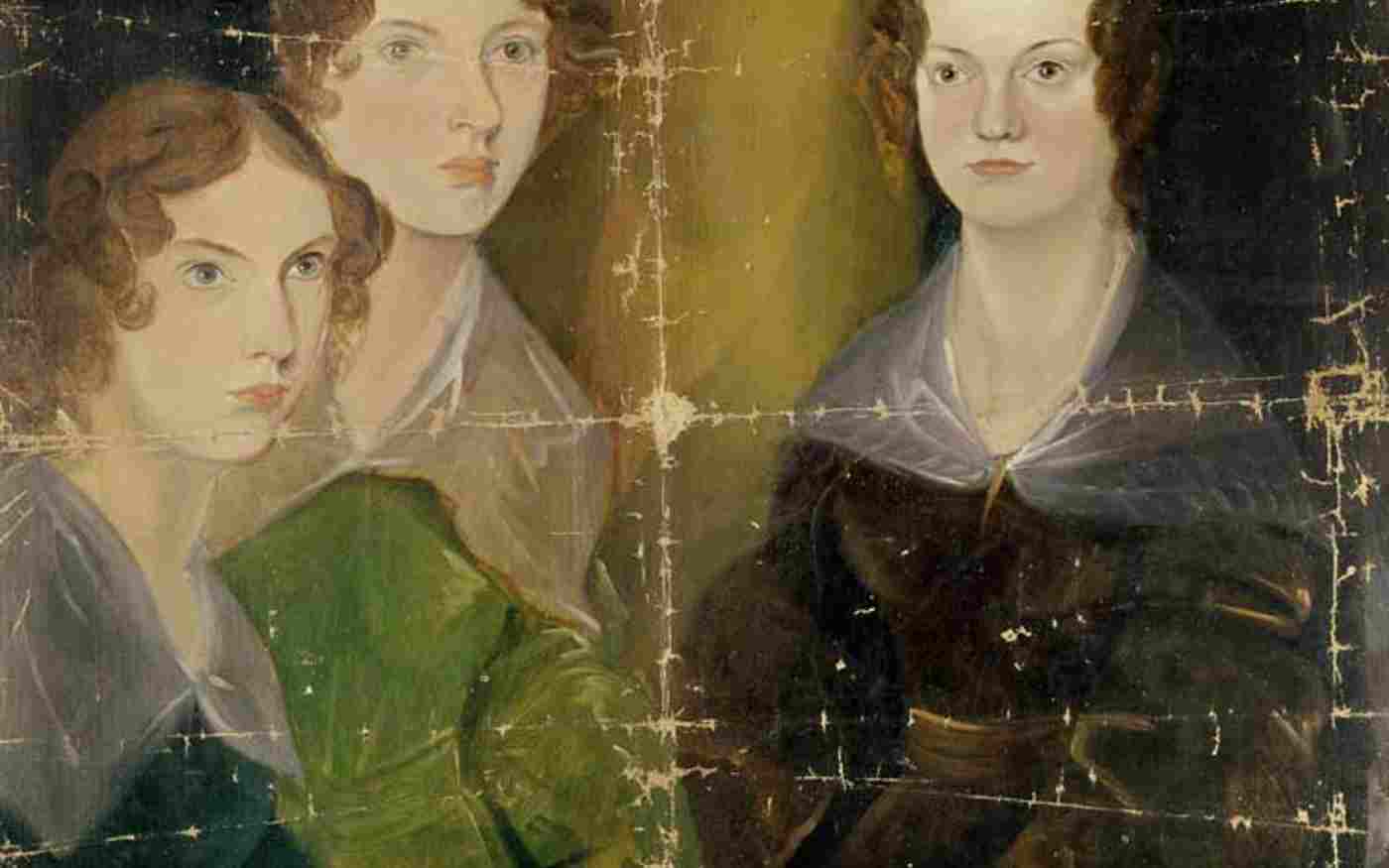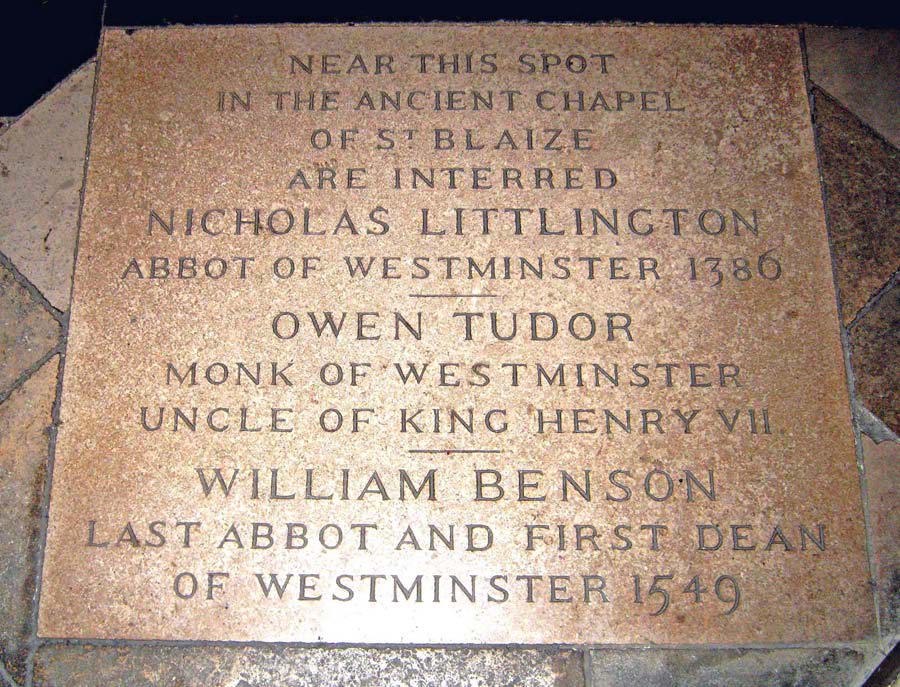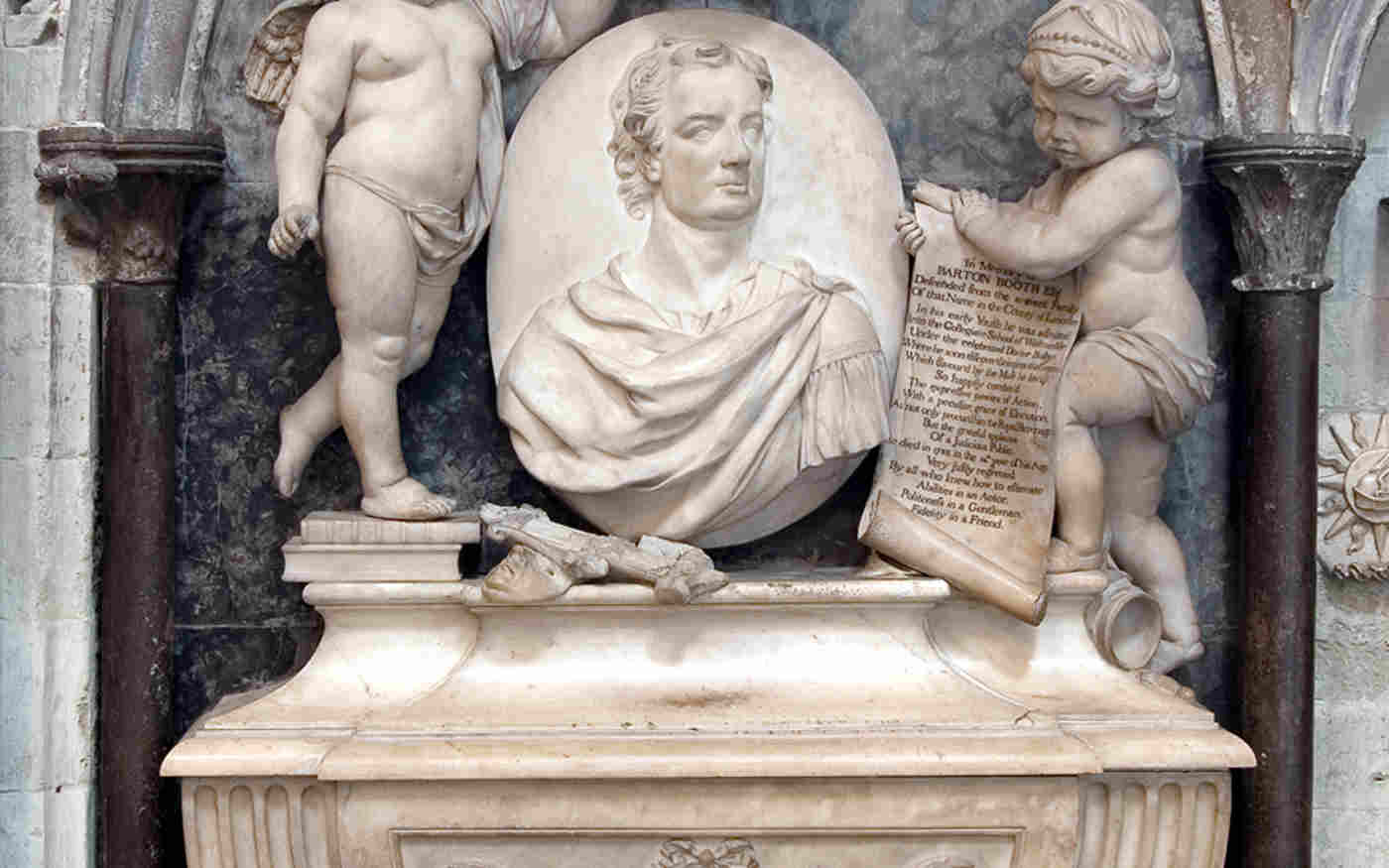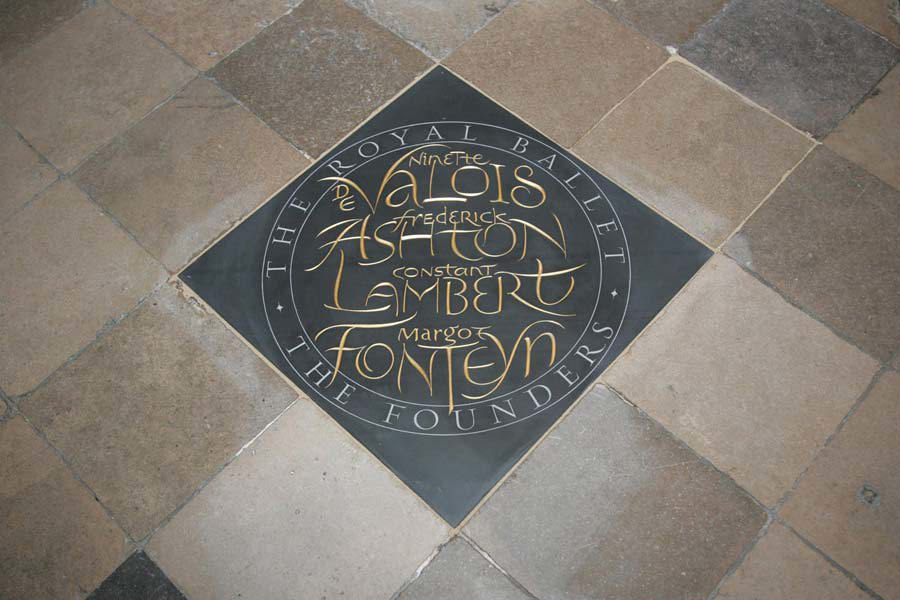Edmund Spenser
On the south wall of Poets' Corner in Westminster Abbey is a marble memorial to Edmund Spenser, poet and author of The Faerie Queene, which he dedicated to Queen Elizabeth I. Anne Clifford, Countess of Dorset (to whose mother Spenser had dedicated a work) put up the memorial in 1620 but this fell into decay and was replaced by the present exact copy in 1778. The poet William Mason, whose memorial is nearby, raised the subscription for it. The epitaph reads:
HEARE LYES (EXPECTING THE SECOND COMMINGE OF OUR SAVIOVR CHRIST JESUS) THE BODY OF EDMOND SPENCER THE PRINCE OF POETS IN HIS TYME WHOSE DIVINE SPIRRIT NEEDS NOE OTHIR WITNESSE THEN THE WORKS WHICH HE LEFT BEHINDE HIM. HE WAS BORNE IN LONDON IN THE YEARE 1553 AND DIED IN THE YEARE 1598. Restored by private subscription 1778.
William Camden, in his 1600 guide to the Abbey records the following epitaph:
Here close to Chaucer lies Spenser; nearest to him in genius, so nearest to him in burial. Here near Chaucer, O poet Spenser, you will join a poet, even closer to him in your verse than in your tomb. While you were living, English Poesy lived & clapped her hands; now at the point of death, you dying, she fears to die.
Nothing is known of Edmund’s family except that his mother’s name was Elizabeth. He attended Cambridge University and on 27th October 1579 married Maccabaeus Childe at St Margaret’s Westminster. They had two children, Sylvanus (d.1638) and Katherine. His second wife was Elizabeth Boyle and they had a son named Peregrine.
For a short time Spenser was private secretary to Lord Grey, lord deputy of Ireland, and continued to live in Ireland for much of his life until rebels burnt down his house in 1598. He died on 13th January 1599, probably in King Street, near the Abbey (the date of death on his memorial is given in Old Style dating). He was buried near Geoffrey Chaucer’s grave in the south transept on 16th January, at the expense of the Earl of Essex. Many of his contemporaries attended the funeral, possibly including Shakespeare and, according to historian William Camden, they all threw elegies into the grave. In 1938 a search was instituted to try to find Spenser’s exact burial site and see if this story was true but nothing was found that could be positively identified as Edmund’s grave.
Edmund Spenser: his life, memorial and poetry
Further Reading

This image can be purchased from Westminster Abbey Library
Image © 2025 Dean and Chapter of Westminster










